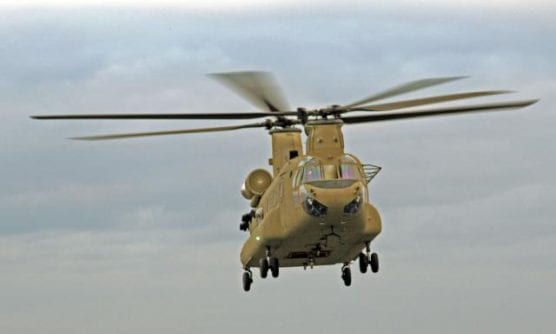With fire experts predicting a “dire” wildfire season ahead, two of the world’s largest firefighting helicopters joined the Southern California region’s wildfire-suppression arsenal Tuesday.
In a partnership between Los Angeles, Orange and Ventura counties and supported by Southern California Edison with nearly $18 million in funding, the Quick Reaction Force program is set to benefit residents of these counties who are among the most vulnerable to wildfires amid extreme drought conditions and dry vegetation.
Starting Tuesday, the program contracts with Coulson Aviation for up to 180 days to provide additional aerial firefighting resources to the region, including two CH-47 helitankers, one based at Van Nuys Air Tanker Base and the other at the Joint Forces Training Base in Los Alamitos, as well as a Sikorsky S-61 helitanker based in Ventura County, along with a mobile retardant base and hover-filling tanks.
The Boeing Chinook CH-47 helitankers are considered the world’s largest fire suppression, retardant-dropping helicopters, with the capacity to carry 3,000 gallons — triple that of a typical firefighting helicopter — and ability to fly at night, according to fire officials.

A Boeing Chinook CH-47 helitanker. Courtesy of Boeing
Here in L.A. County, the CH-47’s are set to join the Fire Department’s Air Operations fleet of 10 helicopters — comprised of three Bell 412EP’s, two Bell 412HP’s, three Sikorsky S-70A Firehawks and two Sikorsky S-70i Firehawks — and two CL-415 Super Scoopers leased each wildfire season from the government of Quebec in Canada for 90 days, which are expected to arrive in early September.
The arrival of the CH-47’s comes as the Santa Clarita Valley is under an excessive heat warning, with temperatures expected to remain in the triple digits through the week, according to National Weather Service officials.
“We’re already seeing vegetation very dry for this year; typically, we don’t see this kind of dry fuels until August,” NWS meteorologist David Gomberg said in a previous Signal interview. “We’re really about six to eight weeks ahead of schedule in terms of that … you put the heat wave on top of this very dry vegetation and it’s definitely a concern.”
For tips on preparing for fire season, visit fire.lacounty.gov/rsg or santa-clarita.com/Emergency.
Like this:
Like Loading...
Related





 Tweet This
Tweet This Facebook
Facebook Digg This
Digg This Bookmark
Bookmark Stumble
Stumble RSS
RSS



























REAL NAMES ONLY: All posters must use their real individual or business name. This applies equally to Twitter account holders who use a nickname.
0 Comments
You can be the first one to leave a comment.